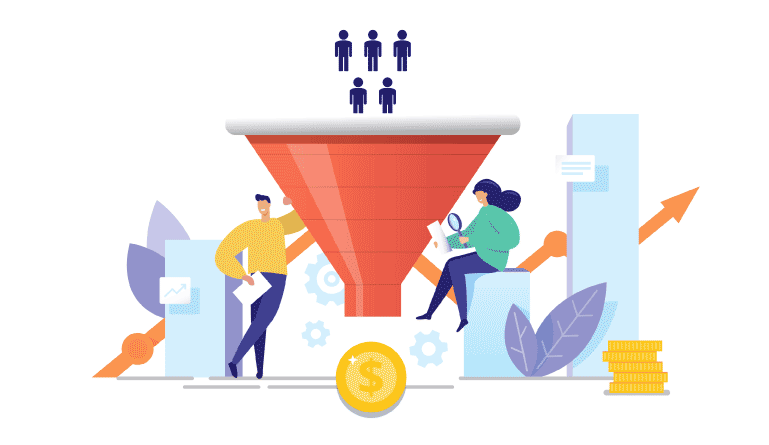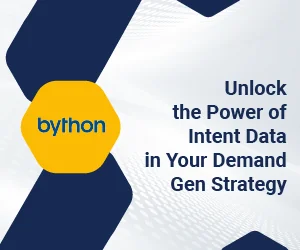Conversational marketing was developed as an outcome of the gradual progression of live chat tools, techniques, and processes. The objective was to design interactions that appear to be conversations so that your customers may engage with you whenever and wherever — and for whatever reason — they want. This is increasingly becoming a top priority for B2B buyers, making it vital to invest in conversational marketing.
Defining Conversational Marketing in B2B
In order to engage website visitors and swiftly take them through the purchase experience, conversational marketing is, in its essence, dialogue-driven. It produces a real experience that fosters connections with clients and/or buyers.
The notion is that changes in consumer behavior and technological advancements have made it possible for us to speak directly with a large number of potential customers.
People have always expected and will continue to expect exchanges with businesses to be supportive, intimate, and sympathetic. With the aid of technology, you may utilize conversational marketing to go from impersonal mass communication to a unique consumer experience. Live chat, AI bots, or messaging services like Slack or WhatsApp are the tools that enable this.
Why does B2B conversational marketing work so well? Well, in B2B sales, decision-making times are unavoidably longer, so buyers are ready to start a conversation earlier and continue the conversation for a longer duration. In this situation, live chat and chatbots may be extremely valuable to the overarching customer experience.
How Does Conversational Marketing Work in B2B?
The fundamental tenet in this field of marketing strategy is to engage the client in meaningful two-way discussions rather than using one-way communication channels like surveys and emails. When implemented correctly, it is generally the quickest and most efficient method to garner leads through the sales funnel. What’s more, it ultimately converts these prospects into long-term customers.
A conversational marketing plan that is effective will combine the advantages that automated bots, and live chat operators have to offer.
- A customer discovers the website of the company you represent and begins browsing through your offers.
- As soon as the visitor comes in, an automated chatbot messenger welcomes them and offers support. They decide to submit their inquiry in the text box after a few moments of contemplation.
- An automated chatbot provides the proper response right away. The message also offers to put him in touch with a live employee who will address any further queries.
- Backend conversational marketing software identifies this site visitor as a “warm lead.”
- The visitor replies, “Yes,” and within minutes, he or she starts chatting with a real person (a sales representative).
- The customer asks further questions regarding the product and describes a problem he is attempting to address.
- The salesperson is able to respond to all of the visitor’s inquiries, share further information about how the company reacts to the problem at hand, and then, finally, successfully close the transaction.
You can also optimize a conversational marketing workflow to customize the experience on your website. Imagine a site user stopped by, perused, and accessed a case study. They come back later requesting additional product and pricing information. You can configure a chatbot workflow to welcome the individual and offer targeted options for the next action they may wish to take based on previous behavior.
The chatbot might offer a product data document, buying guide, and an opportunity to arrange a meeting with a sales representative. These are all useful options for a person who has shown interest, which can assist their progress further down the sales pipeline.
On the other hand, someone who completes a web form will be greeted with a different conversation flow.
Use Cases to Apply B2B Conversational Marketing
From the workflows we discussed, it is clear that conversational marketing is an extremely versatile tool. You could apply it at virtually any moment of truth (i.e., point of decision-making) on the B2B customer journey. Here are a few useful ideas:
1. Insert upselling and cross-selling options into support queries
Conversational marketing is the most successful on websites with a high volume of users requesting assistance. Previously, a website may have only offered assistance in the format of a frequently asked questions subsection. By using live messaging, however, consumers receive faster and more customized solutions to their problems. You can even follow up on an effective resolution with an upselling or cross-selling offer, gaining from the goodwill you have just created.
2. Guide prospects through your offerings
Using a chatbot, businesses with complicated offerings can interact with website visitors through their service pages in order to help them learn more about the product and its features. The chatbot permits the user to select their own personalized journey (almost like gamification) and explore your content in a way that’s contextual and personal to them. This brings us to the next idea.
3. Explain pricing in a ready-to-convert way
Several B2B organizations have difficulty articulating their pricing structures on their websites. This is especially true for businesses with a consulting aspect to their services. On a pricing page, a live discussion or chatbot lets you provide individualized solutions to complex pricing questions.
4. Replace lead generation forms with a chatbot
Conversational marketing is another way to boost lead generation in bottom-of-funnel (BOFU) interactions. Instead of requiring individuals to complete lead capture paperwork and await a response, they can immediately arrange a meeting or demo session with a representative.
Bypassing forms can increase lead volumes but not necessarily their quality. Ensure that you refrain from lowering the barrier to entry — preventing a state where leads are not qualified and you spend resources on low-quality prospects.
5. Re-engage with old and existing accounts
Conversational marketing may serve as an effective method for rewarding and recognizing customers. These tools enable you to independently partition customer accounts and interact with them frequently without needing time-consuming human intervention on the back end. For this use case, you can rely on messaging apps that come with conversational marketing support.
6. Broadcast community events using conversational marketing
Conversational marketing tools are able to be used to broadcast events, webinars, product demonstrations, and various other time-based marketing activities to your community. You can even accept RSVPs automatically and send alerts via chat. These tools may augment emails by offering busy professionals real-time reminders.
5 Steps to Roll Out Your Conversational Marketing Strategy
To adopt conversational marketing in your B2B organization, you need to:
- Know your target audience: Consider their specific characteristics, preferences, and pain points. It is also essential to consider where your target demographic is in the buyer’s journey. This will help you determine exactly what kind of content and channels will resonate with your audience.
- Purchase your conversational messaging tools: Today, there are multiple chatbots as well as conversational marketing platforms. Consider usability, integration with the current technology stack, customer support, and pricing considerations. HubSpot, Drift, or Intercom are leading enterprise solutions.
- Design the conversation flow: For you to achieve your conversational marketing goals, you must have a clear and effective messaging structure. If you’re new to this category of marketing, it may be wise to hire a dialogue artist for bots (a subcategory of UX copywriting). Create voice and language parameters to ensure consistency. Consider what are your audience’s concerns, and adapt your tone of voice accordingly.
- Work together with sales and train reps: The effective implementation of B2B conversational marketing is contingent upon sales representatives. Ensure your team is capable of resolving any queries or concerns. In addition, define guidelines for when one should escalate/move a consumer to a live agent.
- Measure and improve: Determine the objectives of your strategy, like increasing engagement, generating more prospects, or boosting revenues. Based on this, you can select metrics like click-through rates, conversion rates, CSAT scores, etc.
Conclusion
Today, B2B buyers expect quick, responsive support on their purchase journey as a CX prerequisite. Research found that the No. 1 factor that makes a positive channel experience for B2B prospects is “quick, detailed, and expert answers to my questions.” Incorrect data or failing to react to a query would lead 59% of prospects to discontinue using a B2B brand’s discussion channel, while poor response times would prompt 51% to drop off.
This means that you need to double down on conversational marketing in 2023. Knowing your way around chatbots and bot creation tools for conversational marketing can add immense value to your organization.







